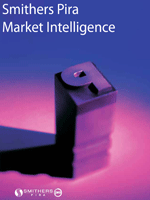 Current state of the market
Current state of the market
UV inks and varnishes/coatings have an established niche within the printing and packaging markets. In 2013, the market reached volumes of around 60,000 metric tonnes of ink, in addition to 82,000 metric tonnes of coatings. However, this represents a small fraction of the total 3.2 million metric tonnes consumed that year.
UV inkjet printing, the fastest growing sector for UV, has seen rapid growth in recent years, with the market for UV inkjet printed products increasing from $3.9 billion in 2008 to $6.7 billion in 2012 and is forecast to reach $15.9 billion by 2018.
Benefits
UV was originally taken up in the signage sector because it provides good white and lightfast print, suitable for outdoor applications and the durability of the result can eliminate additional processes such as coating and lamination, thus lowering the overall cost of the final product versus solvent-based printing.
The biggest advantage is the instant-curing capabilities that allow subsequent finishing processes to be carried out immediately, with no delay waiting for drying. The instant curing and durability offers significant technical, economic and environmental advantages for many applications.
Furthermore, all the ink components remain in the printed ink film, making it suitable for food and tobacco packaging where there may be contaminants migrating into the product. The ink cannot penetrate into the substrate after curing, so there is no effect of colour dry-back.
Generally, a very sharp result is achieved as the ink dries before it has a chance to spread and there is no contamination from spray powder, giving a cleaner print and operating environment.
UV inkjet printing also has the environmental advantage of eliminating volatile organic compound emissions which are found in solvent-based inks. This has driven adoption rates in North America and Europe in particular, where the push to become more sustainable and "greener" has grown. Moreover, there is no requirement for any large oven so there may be space savings as well as energy reductions.
What does the future hold?
The technology involved in UV inkjet printing is developing rapidly, from the print heads in use, to inks and equipment. Quality has greatly improved through better design and integration with the inkjet artefacts of lines, while missing heads and poor stitching are largely confined to the past.
In 2018 the print volume of UV inkjet is forecast to have risen by 535% from the 2008 volume, ahead of the value growth. This means the average unit cost of all UV inkjet is declining, due largely to cost reductions as the sector matures as well as a significant product mix change with signage falling as a proportion of the overall market.
This research is based on our new report The Future of UV Inkjet Printing to 2018. This report is available now for anyone wanting to find out more about the future of the market for UV inkjet printing.